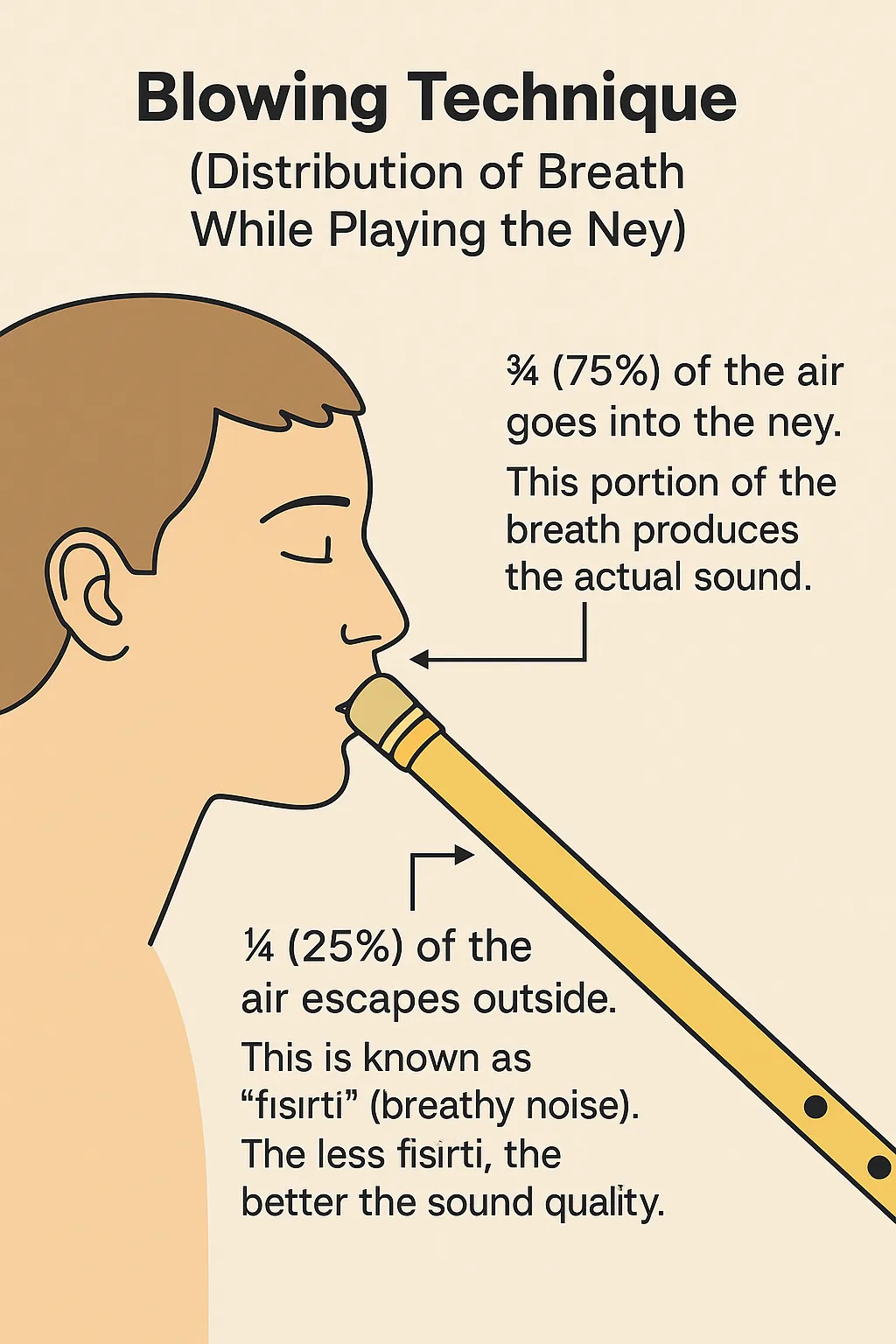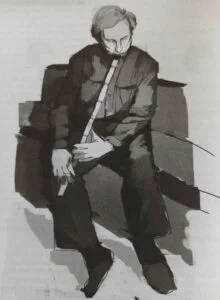The ney can be held either on the right or left side of the mouth—there is no strict rule about this. However, the lips should neither be placed too far inside nor kept too far outside the mouthpiece (başpâre).When playing, approximately three-fourths (3/4) of the breath should go into the ney, and one-fourth (1/4) should be exhaled outside (this ratio is illustrated below).The air that escapes outside is called “fosurtu” (breathy hiss).The less fosurtu there is, the clearer and more beautiful the sound of the ney will be.

During the first one or two weeks, it's essential to focus solely on producing a quality sound without adopting a seated posture or placing the fingers over the holes. Each time the ney is brought to the lips, the goal should be to consistently produce a clear and stable tone. If this fundamental step is skipped, it becomes much harder to achieve good results when starting posture and finger placement exercises later on. This stage can be frustrating at first, as the sound that was once found may disappear in the next session. To overcome this, at least two hours of long-tone practice per day is necessary. If, after one or two weeks, the player is able to produce sound every time they pick up the ney, then it is time to move on to working on holding posture and hand positioning.
Holding and Sitting Posture
(According to the left-hand upper holding position.
The holes are covered so that they align with the middle joints of the fingers. The position for covering the holes may correspond to the first joints of the ring fingers. The little fingers should remain free. The right thumb supports the ney from underneath. The left thumb should cover the back hole (back tone hole). In this way, by slightly leaning the body forward, the right hand, ney, and knee touch each other, and the ney is placed on the right knee. If the ney is played with the right hand on top, this grip should be adjusted accordingly with the other hand, knee, and fingers.

The free left elbow can be supported by the leg through a small footrest placed under the foot, slightly raising it. The head should be slightly tilted to the right, and the eyes should look at the lower end of the ney or the right ring finger. The fingers should neither grip the ney too tightly nor be left too loose. They should be held straight, perpendicular to the ney.




